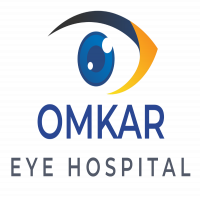How Early Treatment Can Prevent Vision Loss in Diabetic Retinopathy

Understanding Diabetic Retinopathy
Diabetic retinopathy is a serious complication of diabetes that directly affects the retina — the light-sensitive tissue at the back of the eye. It occurs when high blood sugar damages the tiny blood vessels in the retina, leading to leakage, swelling, or the growth of abnormal vessels. If untreated, it can lead to permanent vision loss.
The Importance of Early Detection
Early stages of diabetic retinopathy often show no symptoms. Regular eye exams are crucial in catching the disease before it progresses. Identifying retinopathy at the non-proliferative stage allows for timely medical interventions, slowing or stopping the disease progression and preserving vision.
How Early Treatment Protects Vision
Laser Therapy for Early Intervention
Laser photocoagulation can be used in early stages to seal leaking blood vessels. This prevents further damage and stabilizes vision.
Intravitreal Injections
Anti-VEGF injections are commonly used to reduce swelling in the retina. These injections are especially effective when given before extensive damage occurs.
Strict Blood Sugar Control
Patients who manage their diabetes effectively — with consistent blood sugar, cholesterol, and blood pressure control — significantly reduce the risk of developing severe retinopathy.
Affordable Diabetic Retinopathy Treatment in Chinchwad
Accessing affordable diabetic retinopathy treatment in Chinchwad is vital for early intervention. Many eye care centers in Chinchwad provide quality diagnostic tools and treatment options such as laser therapy and intravitreal injections at reasonable costs. Opting for timely consultation with a qualified retinal specialist in Chinchwad not only reduces financial strain but also improves long-term visual outcomes, particularly for patients requiring regular follow-ups and maintenance therapy.
Stages of Diabetic Retinopathy
Mild Non-Proliferative Retinopathy
Earliest stage with microaneurysms. Early management at this stage prevents escalation.
Moderate Non-Proliferative Retinopathy
More blood vessels are blocked. Early detection helps with timely medical treatment.
Severe Non-Proliferative Retinopathy
Blocked vessels deprive retina of oxygen. This is a critical point where early laser treatment can avoid permanent damage.
Proliferative Diabetic Retinopathy
New, fragile blood vessels form, prone to bleeding. Surgery or laser therapy is often required — early-stage prevention can avoid reaching this point.
Why Waiting Is Risky
Delaying treatment can result in:
Macular edema: Swelling in the central retina, leading to blurred vision.
Retinal detachment: Scarring pulls the retina away from the back of the eye.
Vitreous hemorrhage: Bleeding into the clear gel that fills the eye, impairing vision severely.
Who Needs Early Screening
Patients with:
- Type 1 diabetes for 5+ years
- Type 2 diabetes at the time of diagnosis
- Gestational diabetes with a history of high blood sugar
- Poorly managed blood glucose levels
How to Prepare for Early Treatment
Schedule a dilated eye exam: Ensure your retina can be clearly seen.
Track your sugar levels: Monitor fluctuations and medication responses.
Discuss treatment timelines: Your eye specialist may suggest a wait-and-watch approach or early injections.
Monitoring Your Vision
Simple steps to self-monitor:
- Cover one eye and test vision in the other weekly.
- Use an Amsler grid to check for distortion.
- Pay attention to new floaters, blurring, or dark spots.
Lifestyle Support for Early Management
Healthy diet: Focus on low-glycemic foods.
Exercise: Improves circulation and glucose regulation.
Quit smoking: Reduces risk of progression.
Regular check-ups: Ensures changes are detected early.
How to Find the Right Retina Specialist
Look for board-certified ophthalmologists with retinal specialization.
Ensure access to OCT and fluorescein angiography imaging.
Ask about available payment plans or insurance support.
The Role of Family Support
Support systems help patients:
- Stick to appointment schedules
- Manage blood sugar
- Cope emotionally with diagnosis
Conclusion
Preventing vision loss from diabetic retinopathy is highly achievable — but only with early action. The earlier the diagnosis and treatment, the better the chances of saving sight. Regular screenings, lifestyle adjustments, and accessible care in places like Chinchwad make it possible for patients to lead full, visually active lives.
Note: IndiBlogHub features both user-submitted and editorial content. We do not verify third-party contributions. Read our Disclaimer and Privacy Policyfor details.





